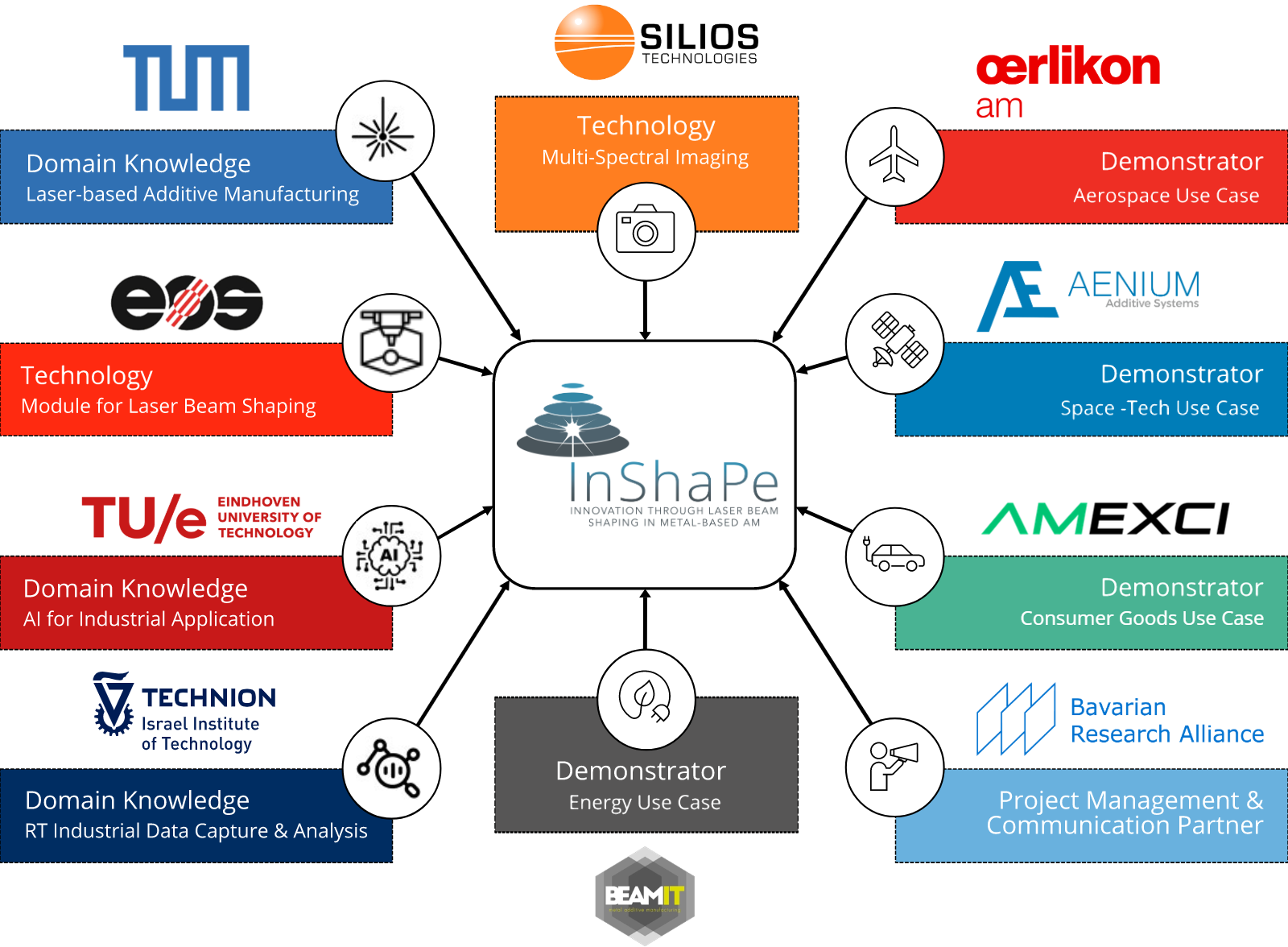Methodology
Main Motivation
To meet the growing demand for manufactured goods in an environmentally conscious manner, future manufacturing processes need to steadily improve, particularly in terms of energy efficiency and resource conservation. Novel manufacturing processes such as Additive Manufacturing (AM) are expected to play an important role in the future.
Especially the PBF-LB/M-technology (Powder Bed Fusion of metals using a laser-based system) is already used for several industrial applications and still has a high potential for further development with respect to productivity and reproducibility.
Additive Manufacturing reveals a great potential to reduce the amount of energy and resources required per part:
- Reduction of the necessary manufacturing steps per part
- Reduction of required material due to the additive rather than subtractive nature of conventional manufacturing processes
- Reduction of component weight due to newly manufacturable geometries
On the other hand, current challenges in Additive Manufacturing further motivate deeper research and development of the processes:
- Low manufacturing speeds due to the layer-wise manufacturing processes
- High effort to develop process parameters (material and time consuming)
- Lack of robustness of the processes
- Lack of standardization
Both main factors, the environmental challenging situation nowadays in combination with further increasing energy demand, as well as the high optimization potential for AM technologies drive the ambition of revolutionizing future manufacturing methods in a digital environment for more efficient and ecological production systems.
Main InShaPe concepts and advantages at a glance
Project Goal and Objectives
The overall project aim is to develop and demonstrate a novel first-time-right powder bed fusion process of metals using laser beam (PBF-LB/M) in four different industrial use cases that is enabled by two technical innovations:
(1) Flexible adaptation of laser beam shapes tailored to the material/geometry of the printed parts, underpinned by a high-power optical module with programmable intensity distributions and AI-techniques to determine the optimal beam shapes for the target value (e.g., determined by material type) and
(2) A multi-spectral in-line process monitoring & control system for predictive quality analysis, enabled by transferring the multi-spectral imaging technology into the Additive Manufacturing domain. The InShaPe process will enable the Additive Manufacturing (AM) of high-potential materials not printable so far, be characterized by
- a 7 times higher build rate,
- over 50% lower cost
- a truly green manufacturing
- 60% less energy use and 30% less scrap.
By means of four different industrial use-cases, the developed system and process optimizations will be verified:
- High-temperature heat exchangers
- Industrial gas turbines
- Combustion devices
- Cylinder heads.
InShaPe methodology at a glance
Socio-Economic Impact
InShaPe will contribute to increasing the productivity, innovation capacity, resilience, sustainability, and global competitiveness of the European PBF-LB/M sector. For example, an energy intensive industry, through the delivery of two innovative enabling production technologies that are expected to immediately yield multiple benefits, including productivity improvements and significant reduction in energy consumption and material wastage, when deployed by target end-users. Indirectly, InShaPe may also play a significant role in increasing the sustainability of European energy intensive industries, e.g., power generation, aviation, automotive, etc., as many of the pivotal technologies that underpin these industries consist of parts manufactured via PBF-LB/M-processes.
Expertise of participants and consortium as a whole
